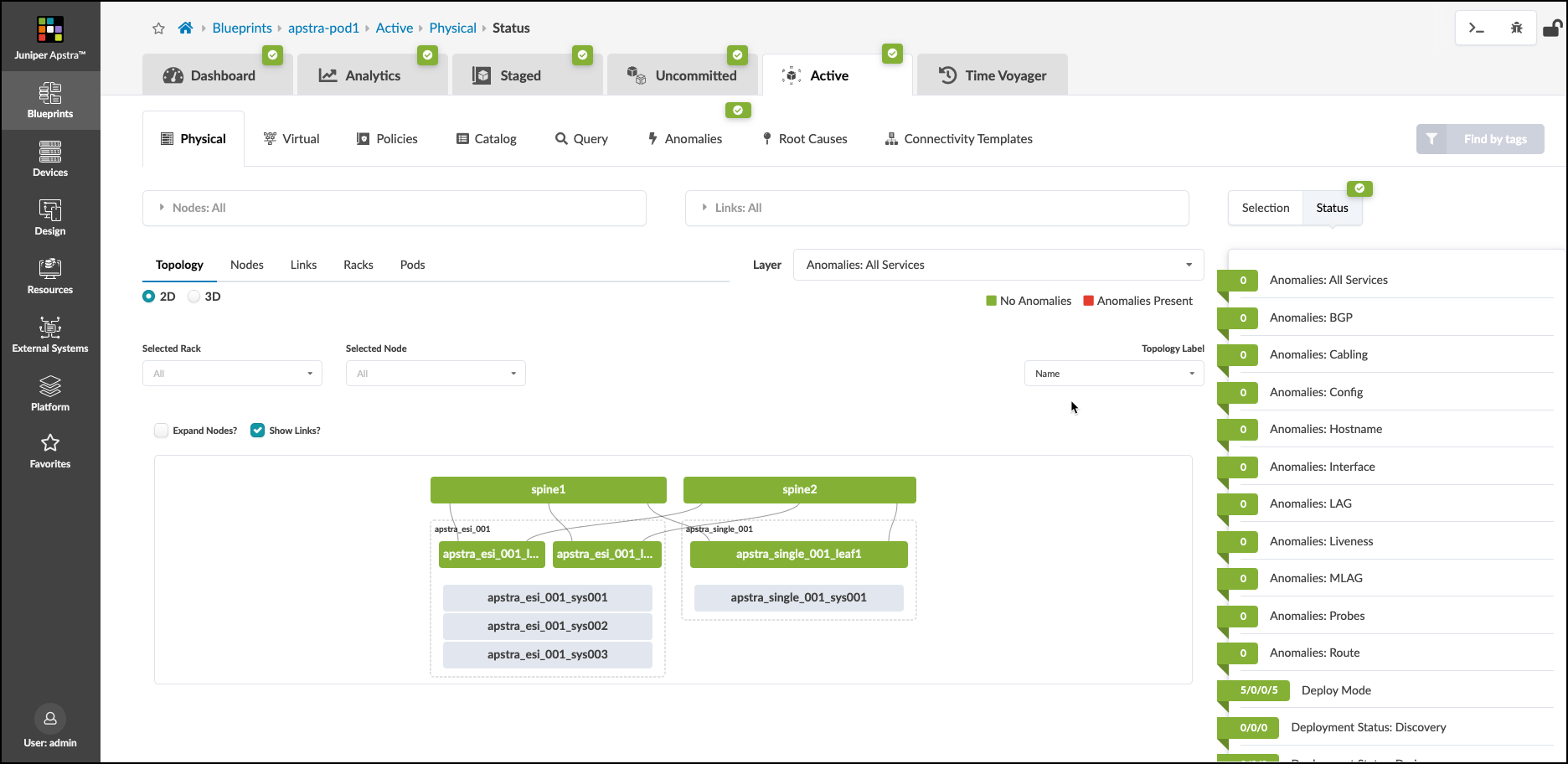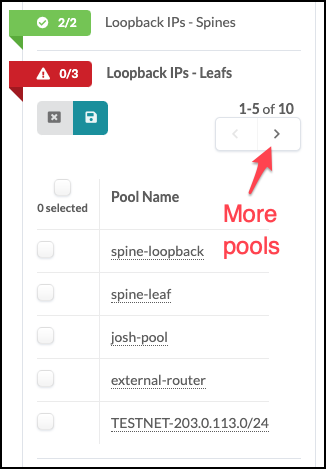Lab Guide 1 - Juniper
Blueprints
Now, you will take the elements that we created in previous sections (and some others that were predefined for you) and bring them together to create a blueprint. Then you will configure individual resources for various elements in the Staging tab. Some elements require resource assignments from pools to complete the configurations. This exercise takes you through the necessary assignments. As these are added, Apstra extracts what is needed from the pool assignments and ensures that all required resources are properly allocated. These details are validated to verify they are in compliance with the design intent before any configurations are performed on the devices. Let’s begin the blueprint creation now.
Create Blueprint
-
Click Blueprints, then click Create Blueprint.
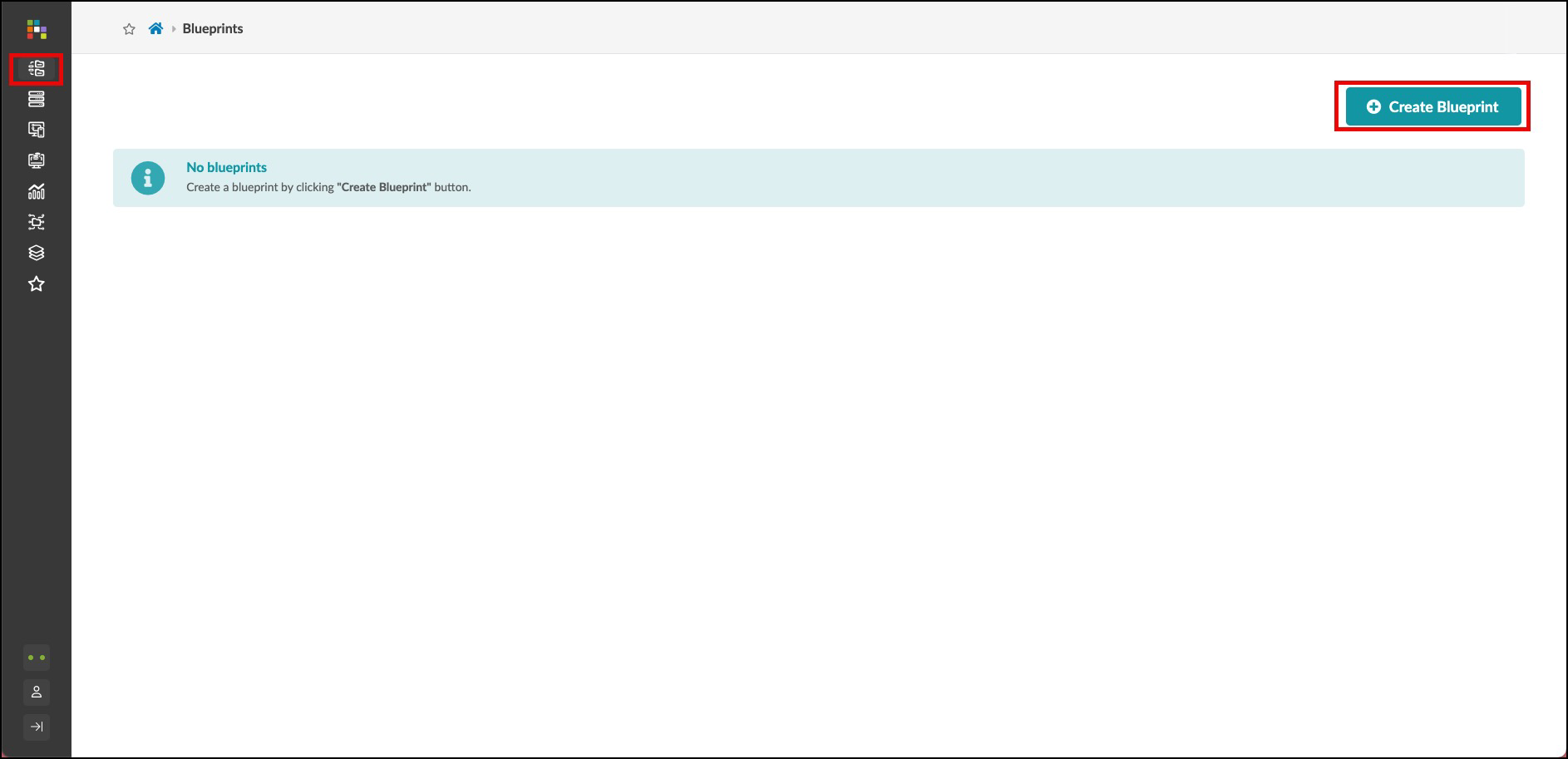
-
Name the blueprint apstra-pod1 or you may replace apstra with your own name, if you like.
-
From the template drop-down list, select apstra_junos. A preview of the blueprint’s intent appears.
-
Click Create to create the blueprint and return to the blueprint summary view. For a moment, you will see Apstra 'scaffolding' the blueprint
-
Once complete, click the blueprint name to see its dashboard. This is where you can check the overall health of the network and quickly see any anomalies. But, before we can see any information on the dashboard, we’ll need to complete our build-out of the blueprint and deploy it. Let’s get started by clicking on the blueprint you have just created.
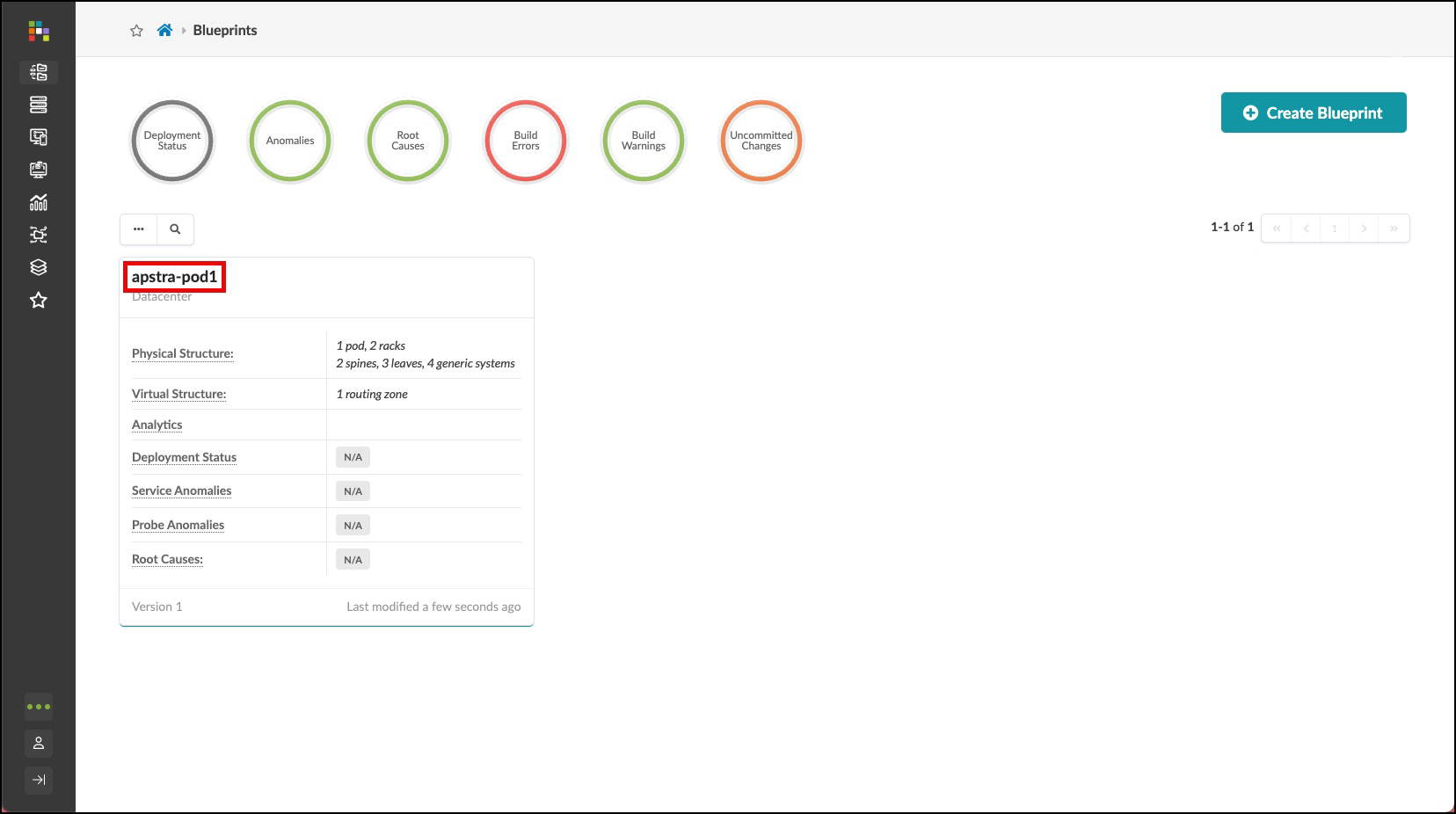
Assign Resources
You’ll notice that there are red indicators showing where assignments are needed. These are places where assignments are necessary to complete the definitions and prepare for deployment. Let’s begin these assignments.
-
From the blueprint, navigate to Staged > Physical > Build > Resources.
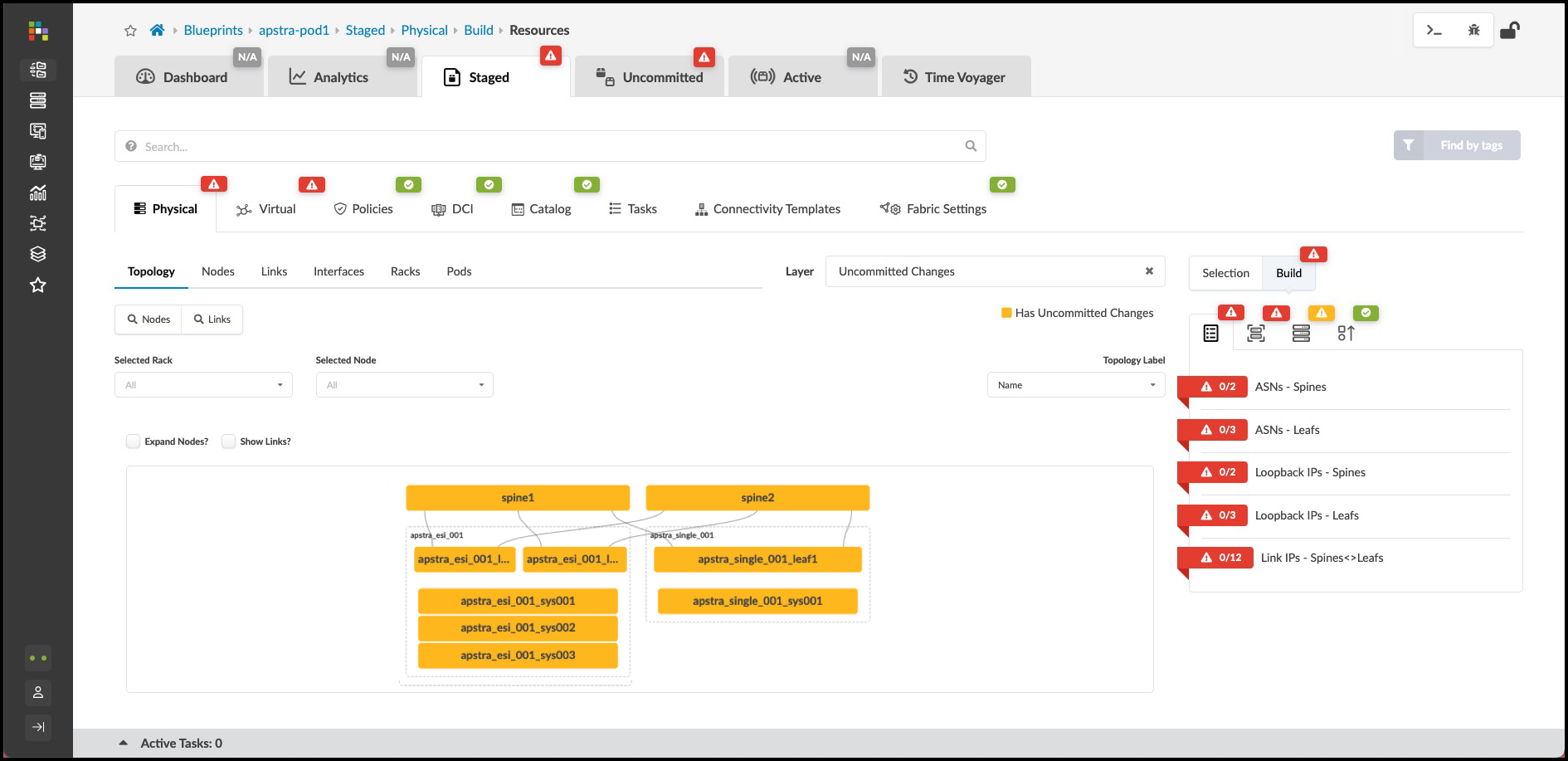
-
Click the red status indicator next to one of the required resources, then click the Update assignments button to see available resource pools.
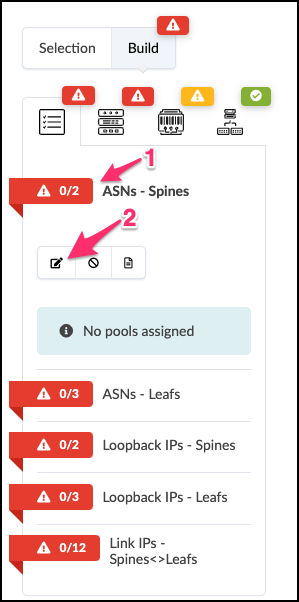
-
Select the pool as specified in the table below for the required resource that you are assigning:
Table 1. Table Pool Resources Resource Requirement Resource Pool ASNs - Spines
vpod-evpn-asn-pool (You created this one.)
ASNs - Leafs
vpod-evpn-asn-pool
Loopback IPs - Spines
spine-loopback (This was created for you.)
Loopback IPs - Leafs
leaf-loopback (This was created for you.)
Link IPs - Spines <>Leafs
spine-leaf (This was created for you.)
|
If you don’t see the required pool, you may need to click the directional arrow to see additional pools.
|
-
Click the Save button. When the resource has been successfully assigned, the red status indicator turns green.

-
Repeat the steps for each resource requirement.
Assign Interface Maps and Perform Our First Commit
-
To the right of the Resources tab, select the Device Profiles tab.
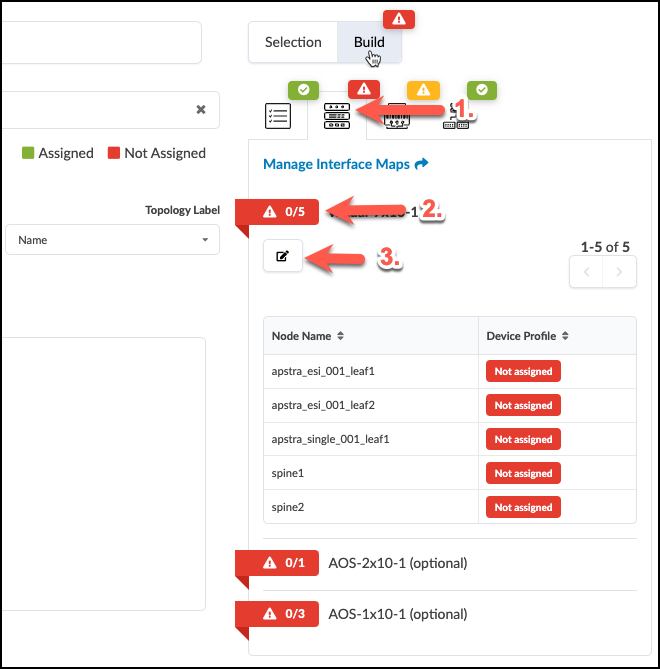
-
Click the red status indicator next to virtual-7x10-1, then click the Change interface maps assignment button.
-
Select interface maps for each device as shown in the table below.
Table 2. Table Interface Map Assignment Values Name Interface Map evpn_esi_001_leaf1
Juniper_vEX__slicer-7x10-1
evpn_esi_001_leaf2
Juniper_vEX__slicer-7x10-1
evpn_single_001_leaf1
Juniper_vEX__slicer-7x10-1
spine1
Juniper_vEX__slicer-7x10-1
spine2
Juniper_vEX__slicer-7x10-1
-
Click Update Assignments to assign the device models and return to the build page. After a moment the red status indicator turns green indicating that the assignment was successful.
Assign System IDs
-
To the right of the Device Profiles tab, select the Devices tab.
-
Click the yellow status indicator next to Assigned System IDs, then click the Change System IDs assignments button
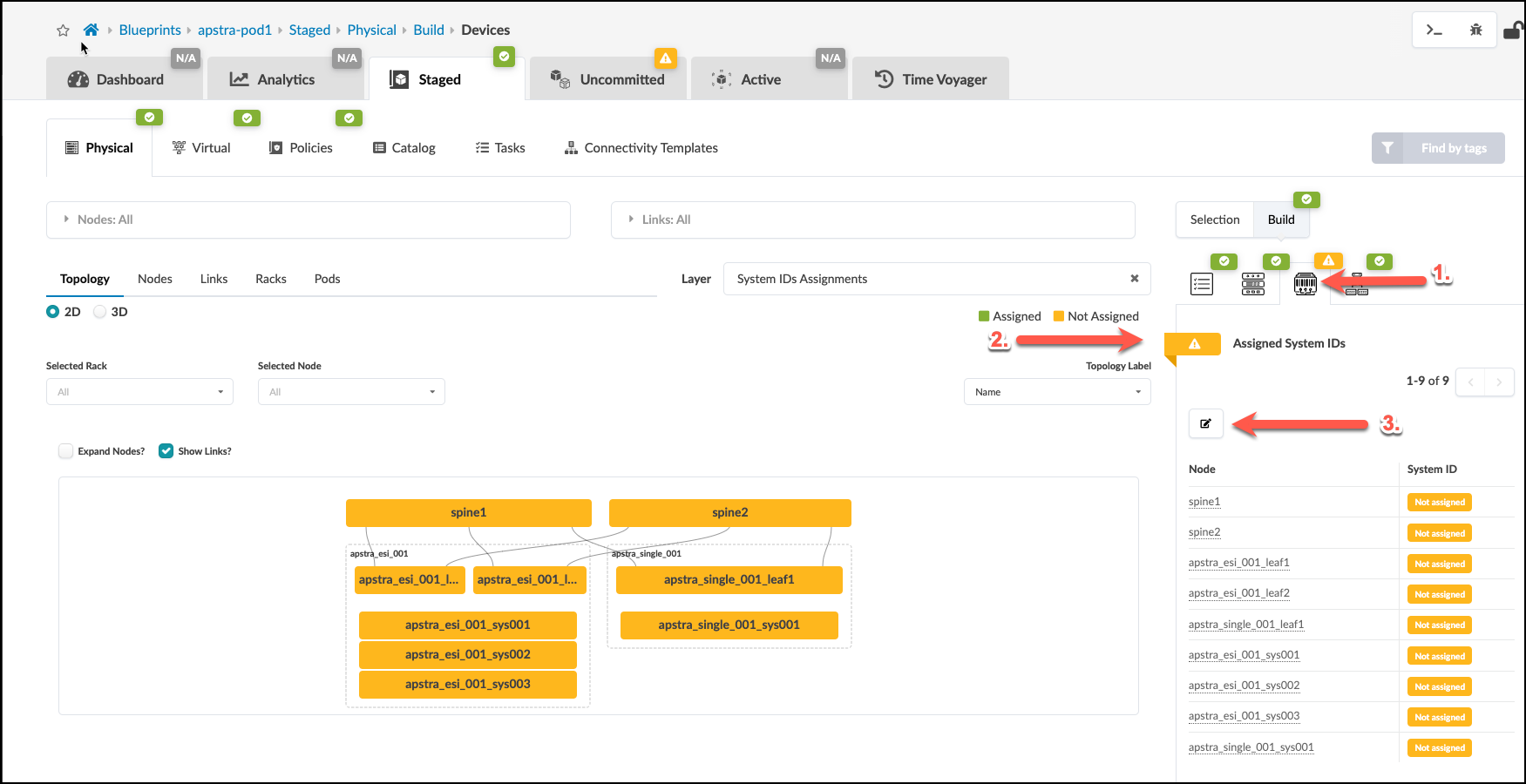
-
Select values as shown in the table below replacing yoursubnet# with the subnet for your own lab. You can find it on your CloudLabs portal, and it will also be in the System ID drop-down lists.
Table 3. Table System ID Values Hostname Value spine1
172.20.yoursubnet.11
spine2
172.20.yoursubnet.12
evpn_esi_001_leaf1
172.20.yoursubnet.13
evpn_esi_001_leaf2
172.20.yoursubnet.14
evpn_single_001_leaf1
172.20.yoursubnet.15
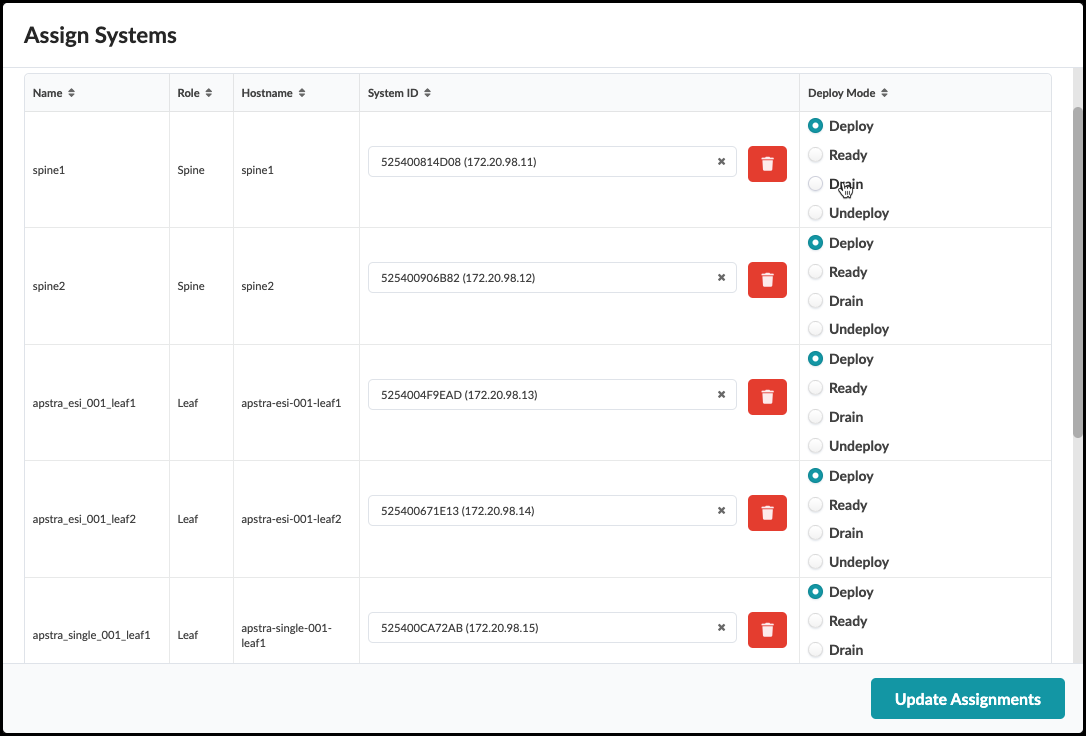
-
Ensure that each system is set to Deploy mode while noting the last octet of each device’s IP address. They are not contiguous. Click Update Assignments to assign the System IDs and you are returned to the Build page. If you had any difficulty making these assignments, make sure you performed the interface map assignments correctly (previous step). Now, let’s commit everything we have done so far into the new blueprint.
-
Click the Uncommitted tab and see all the elements that are staged. The information you see is logical difference in the blueprint state since the last Commit was made. Since this is the very first one, this view shows us everything we have added since we instantiated the blueprint from the template. You can see even more details about the staged changes by clicking the Full Nodes Diff tab. Have a look around this screen to become familiar with how things appear when changes are complete and ready to be pushed to the Active network.
-
After you have looked about, click the Commit button in the upper right.
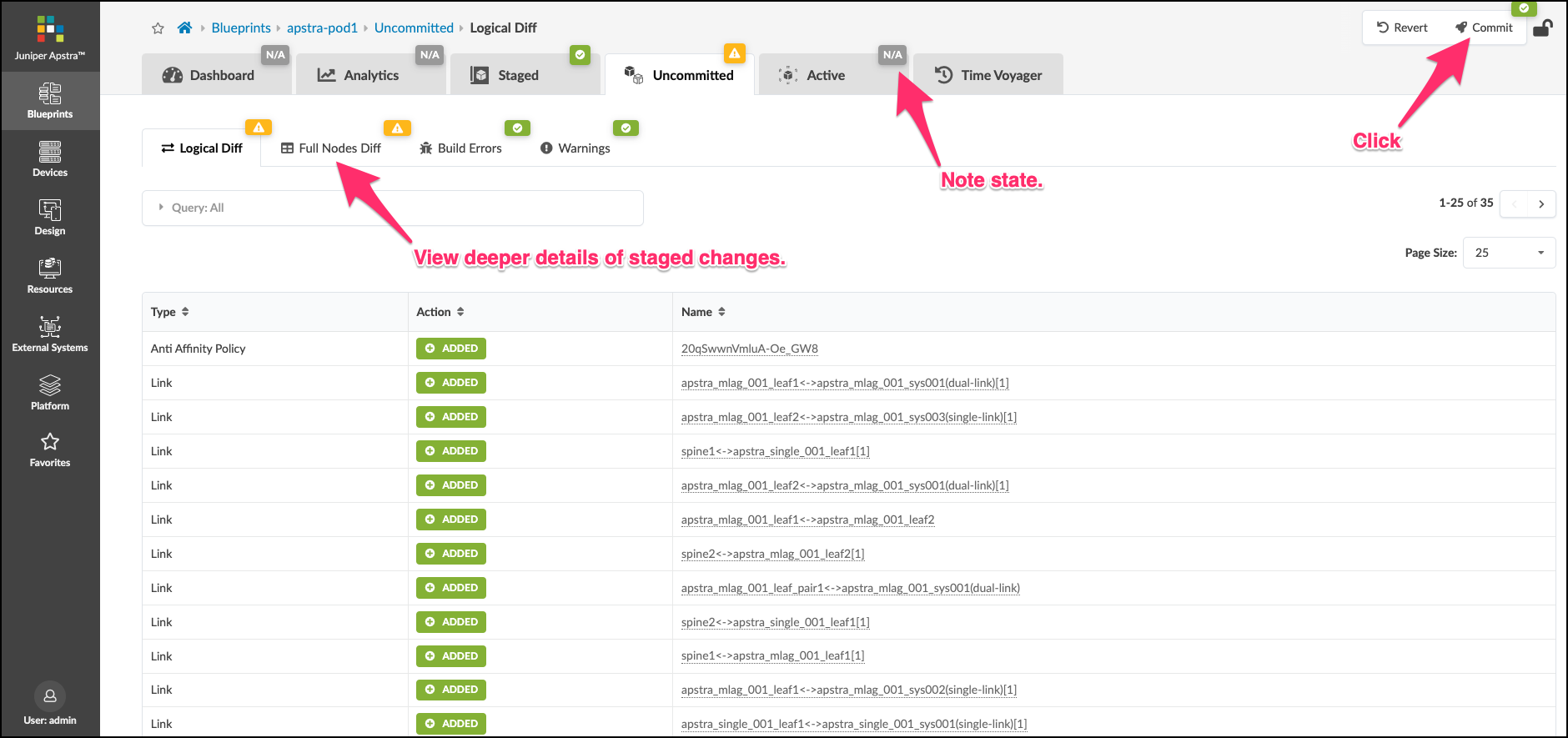
-
Pressing Commit brings up a screen where you can place a description of the changes. Notes and details of the stages changes should be entered to describe what is being added to the blueprint. The more descriptive you are, the better it will be when you wish to move between fabric snapshots using the Time Voyager feature.

-
Once the description is entered, press the Commit button and watch as the Active network is configured. This will take some time. You can enter the Active to watch the network come to life. Over time, the objects will turn green and the anomalies will dissipate. Be patient as the agents configure each device and telemetry begins to flow. Once everything turns green, you are ready to move to the next step.
This is how your network should appear before moving on to the next exercise, where we add the external connections to the fabric.
